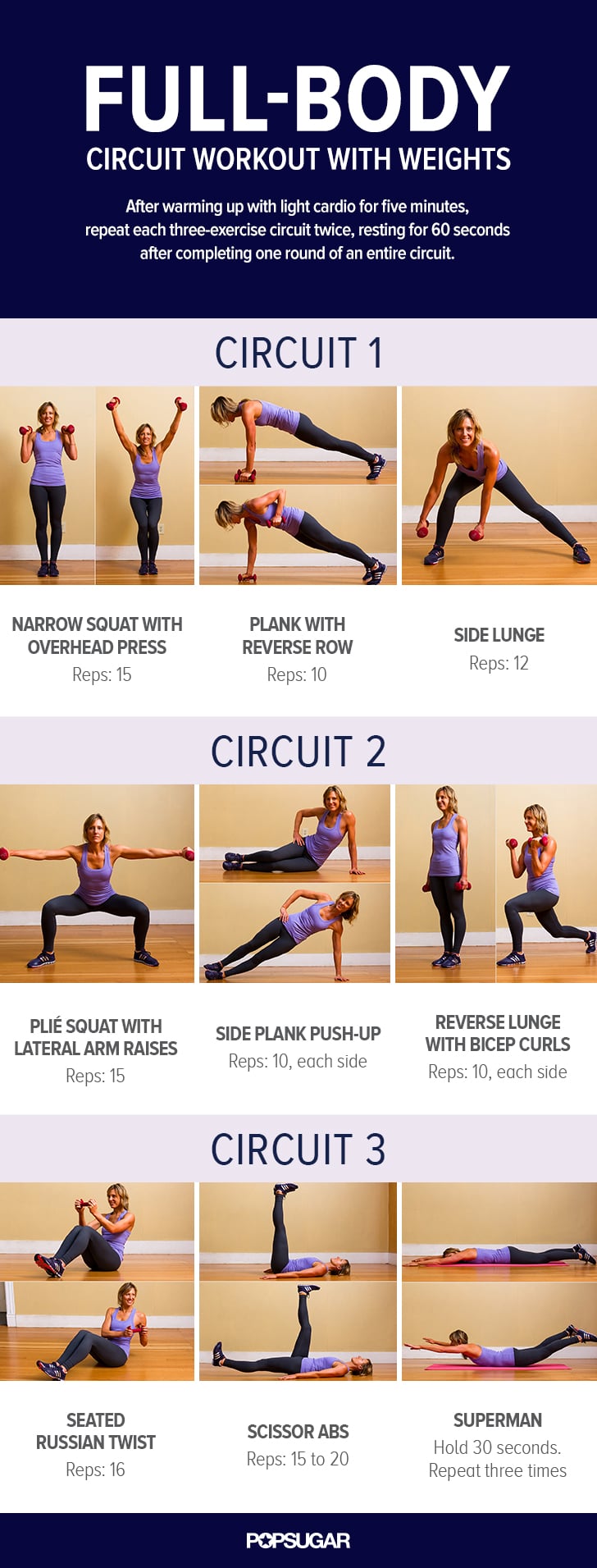The Power of Light Weights: Debunking Muscle Building Myths
For many years, the fitness industry has perpetuated the belief that heavy weights are the key to building muscle and strength. However, recent research has revealed that training with light weights can be just as effective, if not more so, in achieving these goals. This approach, often referred to as “light weight training,” challenges the muscles in a different way, ultimately leading to impressive gains.
Light weight training focuses on high repetition ranges, typically between 12 and 20 reps per set. This high-rep range forces the muscles to work harder and longer, increasing muscle endurance and promoting lean muscle growth. Moreover, light weight training can help prevent injuries by reducing the stress placed on joints and connective tissues compared to heavy weightlifting.
One of the primary advantages of light weight training is its ability to target the slow-twitch muscle fibers, which are responsible for endurance and fatigue resistance. By consistently challenging these fibers through high-rep sets, individuals can improve their overall muscular endurance and enhance their performance in various activities, from sports to daily tasks.
Furthermore, light weight training can be an excellent option for those returning to exercise after an injury or for those with limited access to gym equipment. By using lighter weights, individuals can still achieve significant results while minimizing the risk of re-injury or overexertion. Additionally, light weight training can be easily adapted to bodyweight exercises, making it a versatile and accessible option for people at all fitness levels.
In conclusion, incorporating light weights into your workout routine can yield substantial benefits for muscle building and strength gains. By challenging the muscles in a new way and focusing on high repetition ranges, individuals can experience improved muscular endurance, enhanced performance, and a reduced risk of injury. Embrace the power of light weights and unlock your full fitness potential.
How to Effectively Implement Light Weight Training in Your Workout Routine
Integrating light weight training into your existing fitness regimen can be a seamless and rewarding process. By following a few simple steps, you can ensure optimal results and balanced muscle development. Here’s how to effectively implement light weight training into your workouts:
1. Assess your current fitness level: Before incorporating light weight training, evaluate your current fitness abilities. This will help you determine the appropriate starting weight and repetition range for each exercise. Remember, the goal is to challenge your muscles while maintaining proper form and technique.
2. Choose the right exercises: Select a variety of exercises that target all major muscle groups, including the chest, back, shoulders, arms, and legs. Incorporate both compound and isolation exercises to ensure balanced muscle development. Compound exercises, such as squats, deadlifts, and bench presses, engage multiple muscle groups simultaneously, while isolation exercises, like bicep curls and tricep extensions, focus on individual muscles.
3. Determine your repetition range: Aim for a repetition range of 12 to 20 reps per set. This high-rep range will effectively target the slow-twitch muscle fibers responsible for endurance and fatigue resistance. Additionally, high-rep training with light weights can help improve muscular definition and promote lean muscle growth.
4. Adjust your workout frequency: As you transition to light weight training, you may need to adjust your workout frequency. Since light weight training targets muscle endurance, you may find that you can train each muscle group more frequently than with heavy weightlifting. Aim for 2 to 3 training sessions per week, allowing adequate rest and recovery time between workouts.
5. Implement progressive overload: Progressive overload is the gradual increase of stress placed upon the body during exercise. In light weight training, progressive overload can be achieved by increasing the number of repetitions, decreasing rest periods, or incorporating new exercises. By consistently challenging your muscles, you will promote growth and strength gains.
6. Monitor your progress: Keep track of your workouts, noting the exercises, sets, reps, and rest periods for each session. Regularly review your progress to ensure that you are making consistent gains and adjust your workout routine as needed. This will help you stay motivated and accountable on your light weight training journey.
In conclusion, incorporating light weight training into your workout routine can be a highly effective way to build muscle and strength while minimizing the risk of injury. By following these steps and maintaining a consistent workout schedule, you can unlock your full fitness potential and experience the numerous benefits of light weight training.
The Role of Progressive Overload in Light Weight Training
Progressive overload is a fundamental principle in resistance training, and it plays a crucial role in maximizing the benefits of light weight training. By gradually increasing the demands placed on your muscles, you can ensure consistent gains in strength, muscle mass, and endurance.
In the context of light weight training, progressive overload can be achieved through various methods, such as increasing the number of repetitions, decreasing rest periods, or incorporating new exercises. By consistently challenging your muscles, you will promote growth, enhance performance, and reduce the risk of plateaus.
Here are some practical ways to apply progressive overload in your light weight training workouts:
- Increase repetitions: As your muscles adapt to the demands of light weight training, gradually increase the number of repetitions for each exercise. Aim for a range of 12 to 20 reps per set, and strive to add 1 to 2 additional reps every 1 to 2 weeks.
- Decrease rest periods: Reducing the time between sets can significantly increase the intensity of your workouts. Start by aiming for 30 to 60 seconds of rest between sets, and gradually decrease the rest periods by 5 to 10 seconds every 1 to 2 weeks. This will keep your muscles challenged and promote continuous growth.
- Incorporate new exercises: Introducing new exercises into your light weight training routine can help prevent boredom and plateaus. By targeting your muscles from different angles and with various movements, you can ensure that all muscle fibers are adequately challenged and stimulated for growth.
When implementing progressive overload in your light weight training workouts, it is essential to prioritize form and technique. Never sacrifice proper form for the sake of adding more weight or reps. Maintaining correct form will help prevent injuries and ensure that the targeted muscles are receiving the full benefits of each exercise.
In conclusion, incorporating progressive overload into your light weight training routine is crucial for consistent gains and long-term success. By gradually increasing the demands placed on your muscles, you can maximize the benefits of light weight training and achieve your fitness goals more effectively.
Real-World Success Stories: Light Weight Training Transformations
The effectiveness of light weight training is undeniable, as evidenced by the numerous success stories of individuals who have achieved remarkable results through this approach. By incorporating light weights into their workout routines, these individuals have experienced significant gains in muscle strength, endurance, and overall fitness.
One inspiring example is Sarah, a busy mother of two who struggled to find time for gym workouts. By investing in a set of adjustable dumbbells and committing to a 20-minute light weight training routine three times a week, Sarah was able to build impressive muscle tone and improve her cardiovascular health. Her dedication to light weight training has not only transformed her body but also boosted her confidence and energy levels.
Another success story is that of John, a seasoned weightlifter who suffered a shoulder injury that prevented him from lifting heavy weights. By switching to light weight training, John was able to maintain his muscle mass and strength while rehabilitating his injury. Today, John continues to incorporate light weights into his workout routine, crediting this approach for his ability to remain active and injury-free.
These success stories demonstrate the versatility and effectiveness of light weight training. Whether you are a beginner looking to build a solid fitness foundation or an experienced weightlifter seeking a low-impact alternative to heavy weightlifting, light weight training can help you achieve your fitness goals.
In addition to the physical benefits, light weight training can also have a profound impact on mental well-being. By providing a challenging yet manageable workout experience, light weight training can foster a sense of accomplishment and self-efficacy. Furthermore, the increased release of endorphins during light weight training can elevate mood and reduce stress, contributing to overall mental well-being.
In conclusion, the success stories of individuals who have transformed their bodies and lives through light weight training serve as a testament to the power of this approach. By incorporating light weights into your workout routine, you too can experience the numerous benefits associated with this versatile and effective training method.
Selecting the Right Equipment for Your Light Weight Training Journey
Choosing the appropriate light weight training equipment is crucial for ensuring a safe, effective, and enjoyable workout experience. With a wide variety of options available, it can be challenging to determine which tools are best suited for your fitness goals and preferences. Here, we provide guidance on selecting the right equipment for your light weight training journey.
Dumbbells
Dumbbells are a versatile and popular choice for light weight training, offering a wide range of exercises and resistance levels. Adjustable dumbbells are an excellent option for those with limited space or budget, as they allow you to customize the weight for various exercises. When selecting dumbbells, consider the following:
- Weight range: Choose dumbbells with a wide weight range to accommodate progression and varied exercises.
- Comfort: Look for dumbbells with ergonomic handles and non-slip grips for a comfortable and secure hold.
- Durability: Invest in high-quality dumbbells that can withstand regular use and resist wear and tear.
Resistance Bands
Resistance bands are a portable and cost-effective alternative to traditional weights, providing a dynamic and adjustable resistance for various exercises. When selecting resistance bands, consider the following:
- Resistance levels: Choose bands with multiple resistance levels to accommodate progression and varied exercises.
- Quality: Opt for high-quality bands made from durable materials that can withstand regular use without snapping or stretching.
- Versatility: Consider purchasing a set of bands with various resistance levels and attachments, such as handles and door anchors, to maximize versatility and exercise options.
Kettlebells
Kettlebells offer a unique training experience, combining cardio and strength training in one dynamic workout. When selecting kettlebells, consider the following:
- Weight range: Choose kettlebells with a wide weight range to accommodate progression and varied exercises.
- Comfort: Look for kettlebells with ergonomic handles and a smooth finish for a comfortable and secure grip.
- Durability: Invest in high-quality kettlebells that can withstand regular use and resist wear and tear.
In conclusion, selecting the right light weight training equipment is essential for ensuring a safe, effective, and enjoyable workout experience. By considering factors such as weight range, comfort, quality, and versatility, you can find the perfect tools to support your fitness goals and preferences. Remember to regularly assess and adjust your equipment as you progress in your light weight training journey.
Designing a Balanced Light Weight Training Program
A well-structured light weight training program is essential for maximizing results and ensuring balanced muscle development. By incorporating various exercises, sets, reps, and rest periods, you can create a comprehensive 12-week plan that supports your fitness goals and promotes long-term adherence. Here, we outline a sample light weight training program to help you get started on your fitness journey.
Weeks 1-4: Foundation Phase
During the foundation phase, focus on building a solid base of strength and endurance. Perform exercises at a moderate intensity, with a higher repetition range to target slow-twitch muscle fibers and improve muscular endurance. Aim for 3 non-consecutive training days per week, with the following structure:
- Exercises: Choose 8-10 exercises that target all major muscle groups, such as squats, lunges, chest presses, rows, shoulder presses, bicep curls, tricep extensions, and abdominal crunches.
- Sets: Perform 2-3 sets per exercise, with 12-15 repetitions per set.
- Rest periods: Rest for 30-60 seconds between sets.
Weeks 5-8: Building Phase
In the building phase, gradually increase the intensity and volume of your workouts to promote muscle growth and strength gains. Aim for 3 non-consecutive training days per week, with the following structure:
- Exercises: Continue to target all major muscle groups, but introduce new exercises or variations to challenge your muscles from different angles.
- Sets: Perform 3-4 sets per exercise, with 10-12 repetitions per set.
- Rest periods: Rest for 60-90 seconds between sets.
Weeks 9-12: Refinement Phase
During the refinement phase, focus on fine-tuning your form, technique, and exercise selection to maximize results and prevent plateaus. Aim for 3 non-consecutive training days per week, with the following structure:
- Exercises: Select exercises that you enjoy and challenge your muscles in new ways, such as incorporating plyometric movements, instability training, or complexes.
- Sets: Perform 3-5 sets per exercise, with 8-10 repetitions per set.
- Rest periods: Rest for 90-120 seconds between sets.
Throughout the 12-week program, remember to apply the principles of progressive overload by gradually increasing the weight, reps, or sets as you become stronger. Additionally, listen to your body and adjust the program as needed to accommodate any changes in your fitness level, schedule, or goals. By following a balanced and well-structured light weight training program, you can achieve remarkable results and maintain long-term success in your fitness journey.
The Benefits of Light Weight Training for Overall Health and Well-being
In addition to building muscle and strength, light weight training offers numerous health benefits that contribute to overall well-being. By incorporating light weights into your workout routine, you can enjoy a wide range of advantages that extend beyond the gym. Here, we discuss the various health benefits associated with light weight training.
Improved Cardiovascular Health
Light weight training can significantly improve cardiovascular health by increasing heart rate and promoting blood flow. By incorporating high-intensity interval training (HIIT) workouts or circuit training into your light weight training routine, you can effectively challenge your cardiovascular system and reduce the risk of heart disease.
Increased Flexibility
Light weight training can help increase flexibility by improving joint mobility and range of motion. By performing exercises through a full range of motion and incorporating stretching and mobility work into your routine, you can enhance your flexibility and reduce the risk of injury.
Enhanced Mental Well-being
Regular exercise, including light weight training, has been shown to improve mental health by reducing stress, anxiety, and depression. The release of endorphins during exercise can elevate mood, boost self-esteem, and promote overall mental well-being.
Boosted Metabolism
Light weight training can help boost metabolism by increasing muscle mass and promoting fat loss. As muscle tissue requires more energy to maintain than fat tissue, a higher muscle mass can lead to an increased metabolic rate, even at rest.
Improved Bone Density
Weight-bearing exercises, including light weight training, can help improve bone density and reduce the risk of osteoporosis. By placing stress on bones, you can stimulate bone growth and maintain strong, healthy bones as you age.
Better Balance and Coordination
Light weight training can help improve balance and coordination by challenging your body to maintain stability during exercises. By incorporating single-leg and single-arm movements, you can enhance your proprioception and stability, reducing the risk of falls and injuries.
In conclusion, light weight training offers a wide range of health benefits that extend beyond muscle building and strength gains. By incorporating light weights into your workout routine, you can enjoy improved cardiovascular health, increased flexibility, enhanced mental well-being, boosted metabolism, improved bone density, and better balance and coordination. Embrace the power of light weights and unlock the numerous advantages they provide for overall health and well-being.
Overcoming Challenges and Staying Motivated on Your Light Weight Training Journey
Embarking on a light weight training journey can be both exciting and challenging. It is essential to anticipate and address potential obstacles to ensure long-term success and adherence. Here, we offer practical tips and strategies for overcoming common challenges and maintaining motivation during your light weight training journey.
Setting Realistic Goals
Setting achievable and realistic goals is crucial for maintaining motivation and staying on track. Break your overall fitness objectives into smaller, short-term goals that can be accomplished within a few weeks or months. This will help you see progress and stay motivated as you work towards your long-term vision.
Staying Consistent
Consistency is key to achieving success in light weight training. Schedule your workouts in advance and treat them as non-negotiable appointments. By committing to a regular workout routine, you will create a habit that will help you stay motivated and accountable.
Mixing Up Your Workouts
Avoid boredom and plateaus by regularly mixing up your workouts. Incorporate various exercises, rep ranges, and training methods, such as circuit training, supersets, and drop sets, to keep your body and mind engaged and challenged.
Tracking Your Progress
Tracking your progress is an excellent way to stay motivated and see the results of your hard work. Keep a workout log or journal to record your exercises, sets, reps, and weights. Regularly review your progress to identify areas of improvement and celebrate your achievements.
Seeking Support and Accountability
Having a support system and being held accountable can significantly impact your motivation and adherence to your light weight training program. Share your fitness journey with friends, family, or an online community, and consider working with a personal trainer or coach for guidance and encouragement.
Managing Time Constraints
Time constraints are a common obstacle for many individuals. To overcome this challenge, make the most of your time by incorporating efficient workout routines, such as full-body workouts or circuit training, and utilizing time-saving strategies, such as preparing your workout clothes and equipment in advance.
By implementing these practical tips and strategies, you can overcome common challenges and maintain motivation during your light weight training journey. Remember, consistency, progress tracking, support, and time management are crucial elements for long-term success and adherence. Embrace the power of light weights and enjoy the numerous benefits they provide for overall health, well-being, and fitness.









